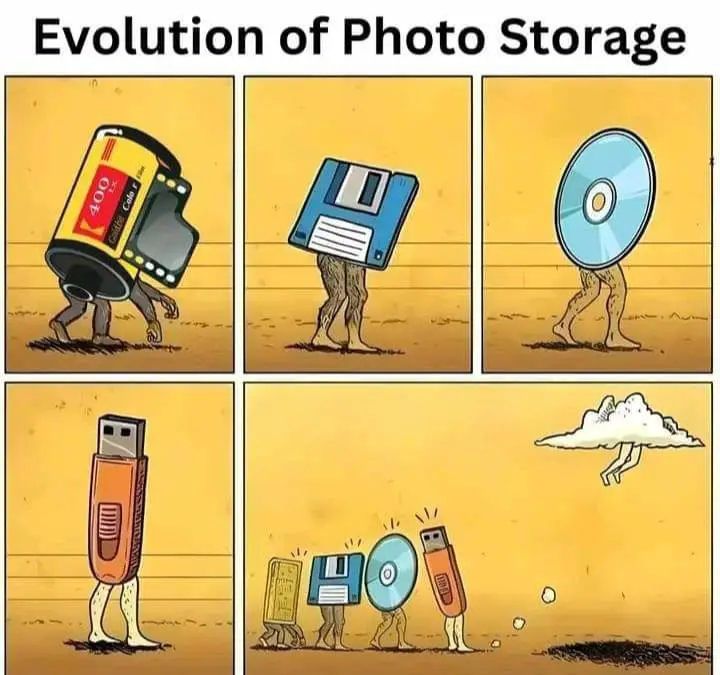
Remember the days when capturing a moment meant carefully loading a roll of film into your camera, crossing your fingers that you’d get at least a few good shots, and then waiting days to see the results? The way we store and share our photographic memories has undergone a remarkable transformation since then. Let’s take a nostalgic journey through the evolution of photo storage from the 1990s to today.
The 1990s: The Era of Film and Physical Albums
In the 1990s, photo storage was a tangible, physical experience. Most families had a designated “photo drawer” or a collection of shoeboxes stuffed with snapshots. The more organized among us meticulously arranged photos in bulky albums, complete with sticky pages and protective plastic sheets.
The process was simple but time-consuming:
- Shoot a roll of film (24 or 36 exposures)
- Take it to a photo development shop
- Wait anxiously for a few days
- Collect your prints and negatives
- Decide which photos were album-worthy and which would be relegated to the shoebox
The Early 2000s: The Digital Revolution Begins
The turn of the millennium brought a seismic shift in photography: the rise of digital cameras. Suddenly, we could see our photos instantly and store hundreds of images on tiny memory cards. Computer hard drives became the new shoeboxes, with photos often haphazardly dumped into “My Pictures” folders.
This era also saw the emergence of writeable CDs and DVDs as a means of backing up our precious digital memories. However, the limited capacity of these discs meant that serious photographers often found themselves with stacks of labeled CDs, not unlike the photo albums of yore.
Mid to Late 2000s: The Rise of Online Sharing
As internet speeds improved, online photo sharing platforms like Flickr and Photobucket gained popularity. These sites allowed users to upload their photos to the web, sharing them with friends and family around the world. However, these platforms were primarily for sharing rather than storage, and most people still kept their original files on local hard drives.
The Smartphone Revolution: Photos in Our Pockets
The launch of the iPhone in 2007 and the subsequent smartphone boom changed everything. Suddenly, we all had capable cameras in our pockets at all times. The volume of photos we took skyrocketed, as did the need for more storage solutions.
Social media platforms like Facebook and, later, Instagram became de facto photo storage systems for many, though the quality and resolution were often compromised.
The 2010s: Enter the Cloud
The real game-changer came with the mainstream adoption of cloud storage. Services like Google Photos, iCloud, and Dropbox offered vast amounts of storage space that could be accessed from any device. The best part? Many of these services automatically backed up photos from our smartphones, ensuring we never lost a memory due to a lost or broken device.
Cloud storage also brought powerful search and organization features. Thanks to AI and machine learning, we could now search our photos by location, date, or even the content of the image itself.
Today: The Age of Intelligent, Ubiquitous Photo Storage
In 2024, our approach to photo storage is almost unrecognizable from the shoebox days of the ’90s. Today’s solutions offer:
- Automatic backups and syncing across all devices
- AI-powered organization and editing suggestions
- Seamless sharing options
- Integration with smart home devices (think digital photo frames that update automatically)
- Massive storage capacities that can handle high-resolution photos and 4K videos
The Future: What’s Next for Photo Storage?
As we look to the future, we can expect even more advanced AI features, improved security and privacy options, and possibly even integration with augmented and virtual reality technologies. Some are even exploring decentralized, blockchain-based storage solutions to give users more control over their data.
From physical albums to invisible clouds, the way we store our visual memories has come a long way. While the technology has changed dramatically, the core purpose remains the same: preserving our precious moments for years to come. So, the next time you effortlessly scroll through thousands of photos on your phone, take a moment to appreciate just how far we’ve come from the days of film rolls and photo albums.






